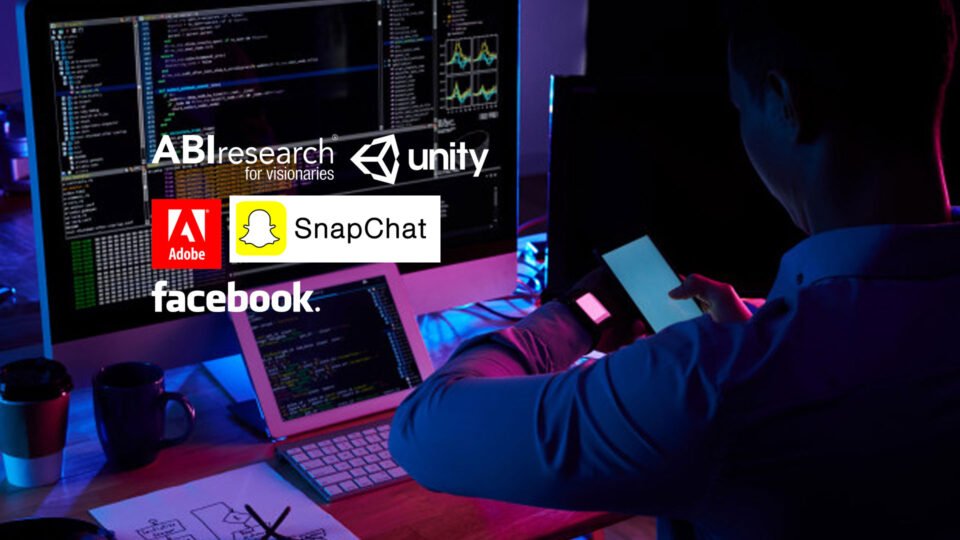Global tech market advisory firm ABI Research examined the current Augmented Reality(AR) market and identified 12 AR solution providers in both consumer and enterprise markets that are leading in their area of expertise through novel solutions. Hardware, software, and services all saw innovation during 2020, with exciting growth in content creation, ease of access and distribution, and consumption.
“In the last couple of months, efforts from AR players have gravitated toward democratizing AR content creation, enriching capabilities, and simplifying distribution processes to empower creators and encourage the development of more efficient and realistic AR experiences,” says Eleftheria Kouri, Research Analyst at ABI Research. “The democratization of AR content creation not only expands the nature of AR use cases and decreases development costs but also builds a foundation for the next generation of AR devices.”
Hot tech innovators include leading AR content creation tools such as Unity, Adobe, Snapchat Lens Studio, and Spark AR (Facebook). These innovators are investing in tools and processes that minimize the need of advanced coding skills and decrease costs of 3D content creation. At the same time, they assist creators to leverage the capabilities of Artificial Intelligence (AI) and Machine Learning (ML) to make context aware, responsive, and realistic AR experiences. All are essential both for complex enterprise use cases such as 3D model visualization as well as consumer focused content like retail.
Innovating in the retail space is L’Oreal. This pioneer in the cosmetic industry, has used advancements in AI and AR to turn the makeup virtual try on from a gimmicky concept to a decision-making tool. L’Oréal’s AR solution has been integrated with the Snap Camera desktop app, allowing users to virtually wear makeup during video calls on various social platforms. This solution allows the brand to remain engaged with consumers throughout the pandemic. AR Quick Look (Apple) is another innovator in the retail space. AR Quick Look is a feature of ARKit, which enables users to preview 3D models and place virtual content on any surface in any real-world environment that is recognized by an Apple device thanks to ARKit spatial tracking. Users can interact with virtual content by moving and scaling it.
Remote assistance got a boost from the pandemic and Realwear and TeamViewer rose to the challenge. RealWear devices are designed to support remote workers and hands-free tasks in hazardous environments, thanks to voice control and noise cancelation algorithms and personal protective equipment compatibility. TeamViewer Pilot, is an AR-based remote support solution suitable for troubleshooting PC problems, assisting with automotive issues or household repairs, and maintaining assignments for manufacturing facilities in remote or international locations.
The COVID-19 pandemic and the establishment of remote work/learning/entertainment at home and the need for telehealth service has unlocked opportunities for new AR providers and use cases to get established in the market, beyond popular use cases like enterprise remote expertise and consumer gaming. For instance, Spatial is a holographic collaboration platform that addresses the lack of physical contact and interaction at traditional video calls through human avatars. Another novel company is Immersiv.io, which specializes in the sports industry and leverages AR, AI, and computer vision technologies for interactive stadium experiences at home. XR Health is a AR/VR health provider that delivers VR devices to a patients’ location, allowing them to continue mental wellness therapies in the comfort of their home rather than in-person visits therapists. Young students forced to learn at home are benefitting from Designmate, which specializes in creating 3D animated content, simulations, and quizzes for young students. The apps have been designed with an intuitive UI, allowing young students to explore and understand complex topics such as the human brain and plant life cycles with the assistance of AR technology.
“2020’s challenges also brought opportunity and will bring about not only more ubiquitous access and usage of AR and VR content, but improvements to existing platforms. While innovation is most seen in smaller, newer companies, AR and VR have a healthy mix; larger companies can still be innovative and impactful in a nascent market. Focus from major players like Facebook and Apple still drive the market forward, while smaller companies can fill in gaps. Going forward, M&A will play an increasingly common role in the immersive markets for this reason,” concludes Eric Abbruzzese, Research Director for ABI Research.
These findings are from ABI Research’s Hot Tech Innovators: AR Content report. This report is part of the company’s Augmented and Virtual Reality research service, which includes research, data, and ABI Insights. Hot Tech Innovators reports focus on companies at the forefront of transformational innovation, particularly those that are younger and less well-known than the incumbents, at the technological forefront of their markets, developing new business models, destabilizing the current market and prime acquisition targets.

